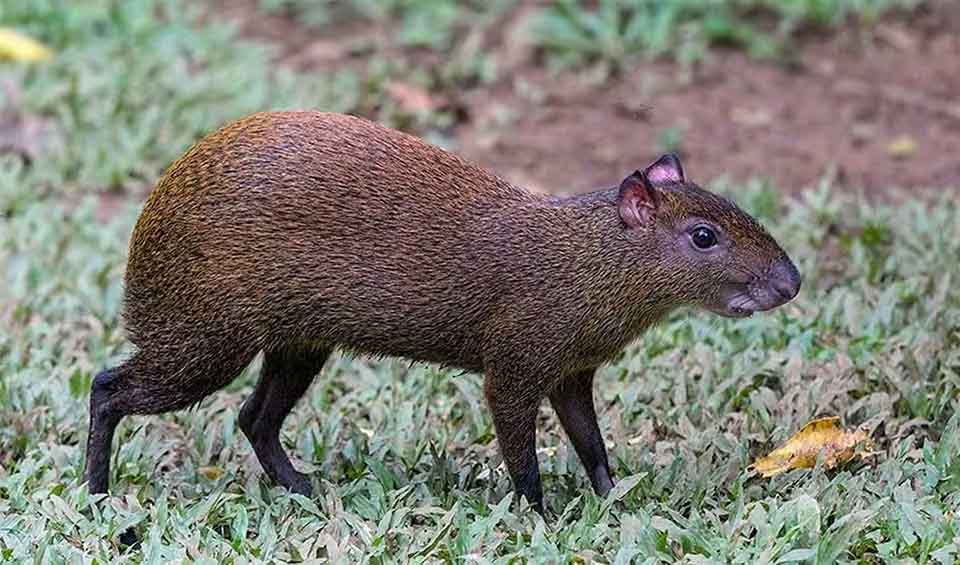This herbivorous creature primarily sustains itself on a diet rich in fruits and nuts, playing a crucial role in the dispersal of seeds, such as those of the Brazil nut, which it not only consumes but also buries for later use. This behavior is instrumental in the regeneration of forests, as the buried nuts that are forgotten can sprout into new trees, illustrating the agouti’s essential role as a natural sower of future forests.
Inhabiting a variety of environments, from the lush, tropical and subtropical forests to areas transformed by agricultural activities, Central American agoutis demonstrate remarkable adaptability. They show a preference for living in clearings and edges of forests rather than dense woodlands, which allows them better access to food sources and more opportunities to detect approaching predators. This habitat preference underscores their importance in maintaining the ecological balance within these environments, acting as a bridge between the forest and cleared lands.
One of the more unusual aspects of Central American agoutis is their diurnal nature, which distinguishes them from many other agouti species that are primarily nocturnal. Their daytime foraging habits make them more visible to human observers and predators alike. However, it also reflects their adaptation to a lifestyle that maximizes the use of daylight hours for feeding and social interactions within their territory.
Despite facing hunting pressure for their meat, which is considered a delicacy in some cultures, and being targeted as a preferred game species, the Central American agouti has managed to maintain stable population levels across its range. This resilience is reflected in its classification as ‘Least Concern’ by the International Union for Conservation of Nature (IUCN). Nonetheless, the continuous hunting and habitat destruction pose ongoing threats to their populations, highlighting the need for sustained conservation efforts.
Distribution
 Belize
Belize Cayman Islands
Cayman Islands Colombia
Colombia Costa Rica
Costa Rica Cuba
Cuba Ecuador
Ecuador El Salvador
El Salvador Guatemala
Guatemala Honduras
Honduras Mexico
Mexico Nicaragua
Nicaragua Panama
Panama Paraguay
Paraguay Venezuela
VenezuelaAnything we've missed?
Help us improve this page by suggesting edits. Glory never dies!
Suggest an editGet to know me
Terrestrial / Aquatic
Altricial / Precocial
Polygamous / Monogamous
Dimorphic (size) / Monomorphic
Active: Diurnal / Nocturnal
Social behavior: Solitary / Pack / Herd / Group
Diet: Carnivore / Herbivore / Omnivore / Piscivorous / Insectivore
Migratory: Yes / No
Domesticated: Yes / No
Dangerous: Yes / No





